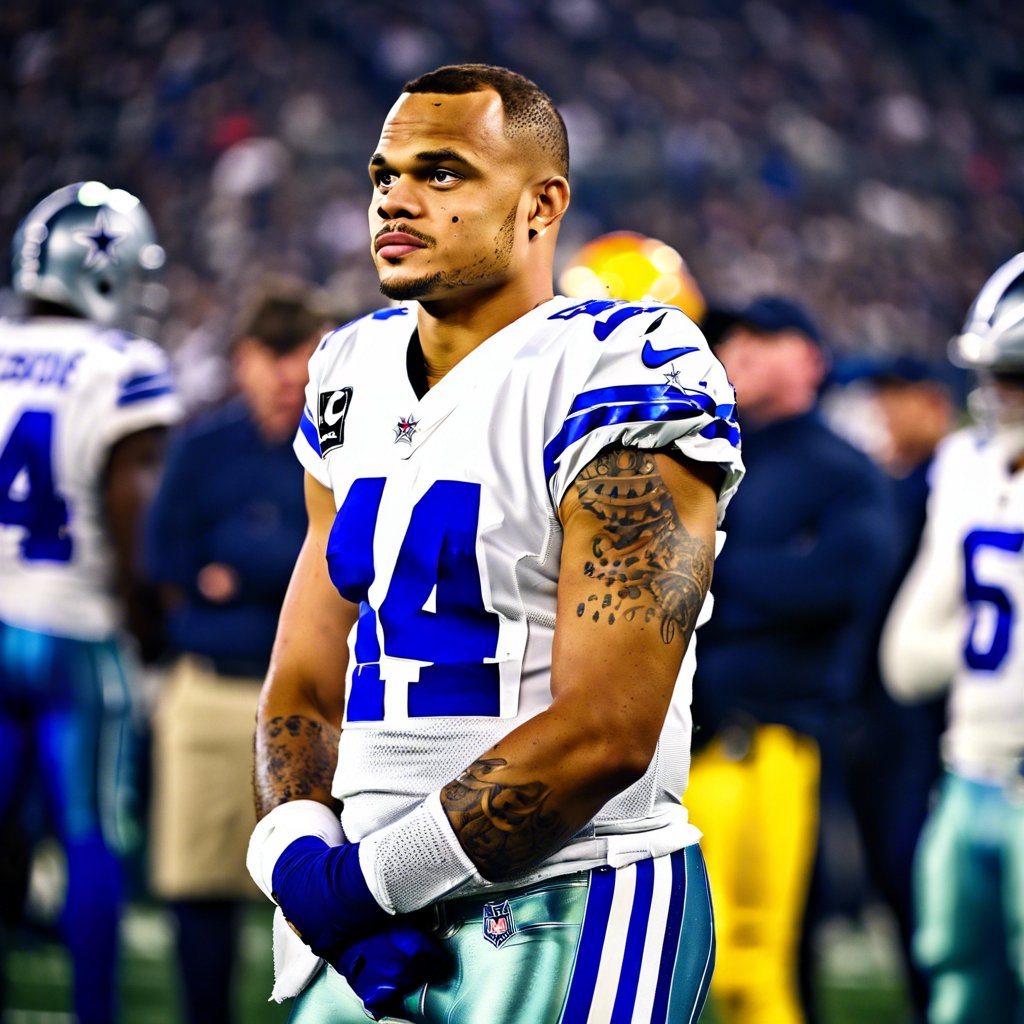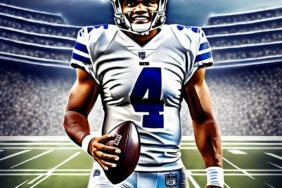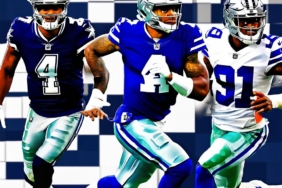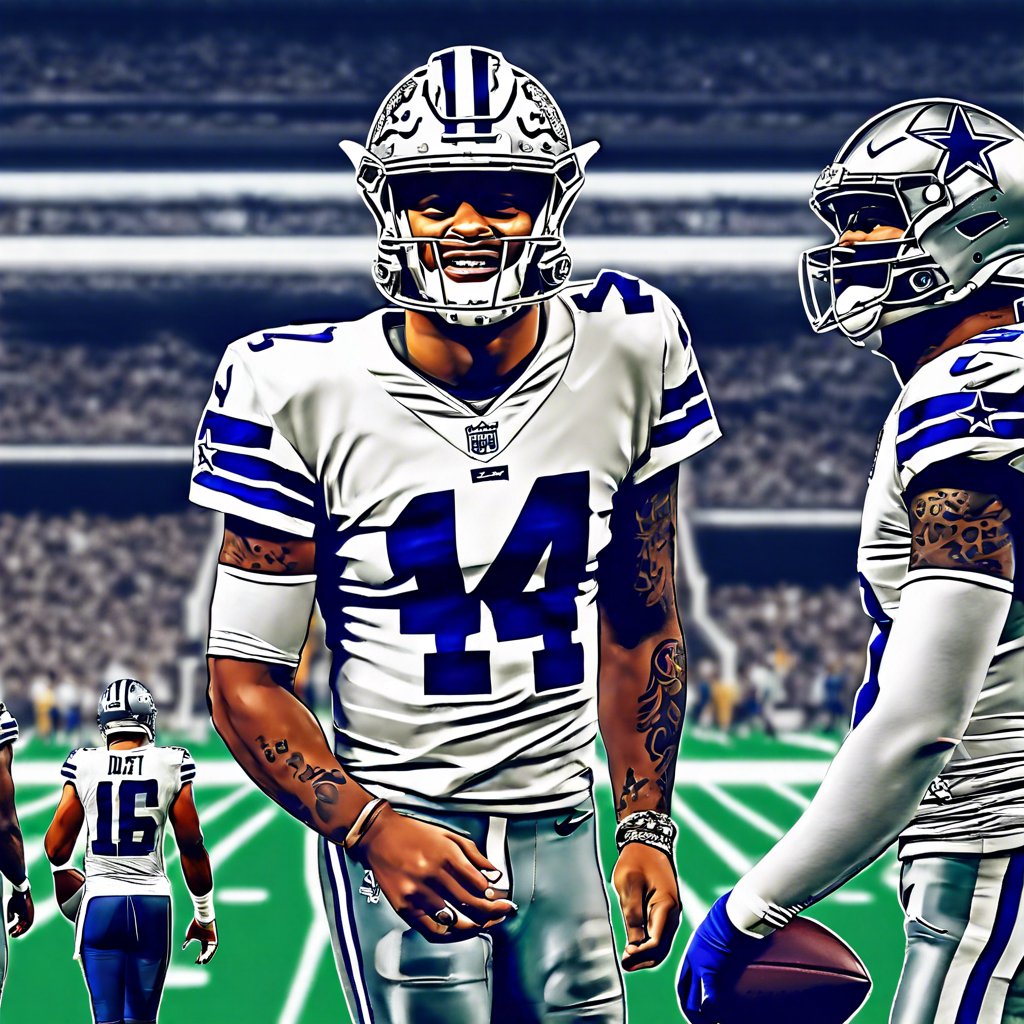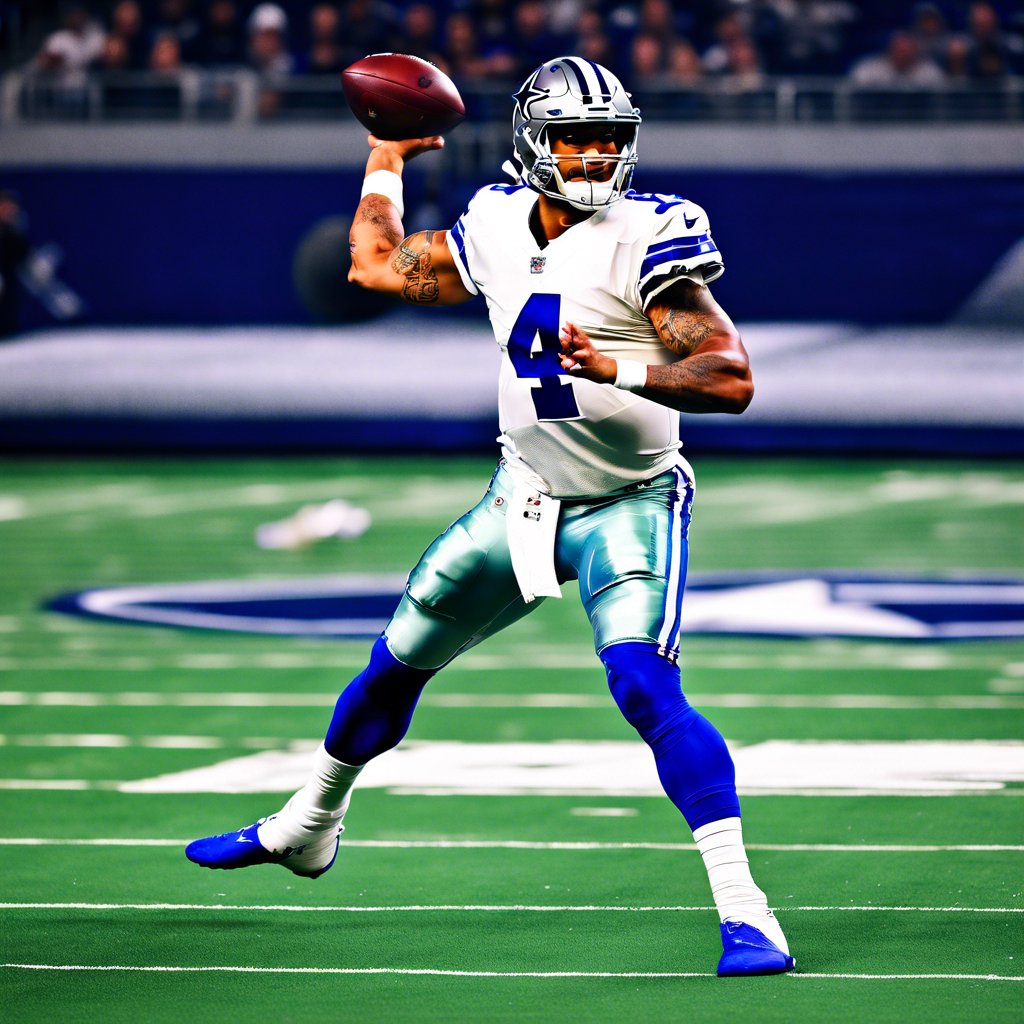The Dallas Cowboys’ Dilemma with Dak Prescott
The Dallas Cowboys find themselves at a crossroads with quarterback Dak Prescott. They face two significant options: A) Offer him a staggering salary to remain a very good — albeit likely not elite — NFL quarterback, or B) Allow him to leave, saving a considerable amount of money but potentially entering a dire quarterback situation.
This decision is far from straightforward, largely due to the fractured state of the NFL quarterback market. In a well-functioning economic model, the best player on the best team would command the highest salary. Therefore, the situation should be simple.
Currently, the Kansas City Chiefs stand as the best team in the NFL, boasting the world’s premier quarterback, Patrick Mahomes. Logic dictates that Mahomes should be the highest-paid player in football. Yet, despite his unparalleled talent, Mahomes ranks 11th in average annual salary at $45 million after recent megadeals signed by Miami Dolphins quarterback Tua Tagovailoa and Green Bay Packers QB Jordan Love.
This presents a problem, not for Mahomes, who is content with his compensation, nor for the Chiefs, but rather for other NFL teams, particularly those in the process of negotiating contracts with their less-accomplished quarterbacks — the Cowboys being one of them.
The Competitive Disadvantage of Overpaying QBs
These franchises are willingly placing themselves at a competitive disadvantage. By offering their veteran quarterbacks salaries that exceed Mahomes’ — or are prepared to do so (looking at you, Cowboys) — they are saddled with the challenge of constructing rosters capable of compensating for the disparity between their quarterback’s abilities and those of Mahomes, all while managing a tighter salary cap.
This may be a simplification, but it reflects the gamble these teams are taking by overcommitting financially to their quarterbacks. It’s a risky bet, yet entirely understandable. The prospect of not investing in a quarterback and facing the abyss of mediocrity is daunting. Front offices must protect their jobs, making the decision to move on from a quality quarterback in a QB-driven league exceedingly complicated.
Prescott’s Leverage in Contract Negotiations
This brings us back to Dallas, where Prescott finds himself in a position of considerable leverage. He is coming off the best season of his career, having just turned 31, and is playing in the final year of his contract. The Cowboys cannot franchise tag him, meaning if they don’t reach a new deal within the next eight months, he will enter free agency. Prescott is acutely aware that should he hit the open market, teams in need of a quarterback will eagerly offer him contracts exceeding $60 million per year. This will likely set the price tag for the Cowboys.
However, can the Cowboys afford to allocate such a substantial portion of their salary cap to a quarterback of Prescott’s caliber while still remaining competitive?
That would be a challenging feat.
Analyzing Recent Conference Championship Teams
I examined the salary cap impacts of quarterbacks on teams that reached the last ten conference title games. Out of those 40 teams, only five had quarterbacks whose salaries exceeded 15% of the cap:
| Quarterback | Team | Season | % of cap |
|---|---|---|---|
| Patrick Mahomes | Chiefs | 2022 | 16.5 |
| Patrick Mahomes | Chiefs | 2023 | 17.2 |
| Aaron Rodgers | Packers | 2019 | 15.6 |
| Ben Roethlisberger | Steelers | 2016 | 15.4 |
| Matt Ryan | Falcons | 2016 | 15.3 |
Among these, only Mahomes’ Chiefs secured Super Bowl victories.
Should we conclude from this that Mahomes is the exception and that teams cannot win championships while their quarterback earns more than 15% of the cap — unless that quarterback is Mahomes? This suggests that paying Prescott may not be in the Cowboys’ best interest and that teams like the Dolphins and Packers may have erred in their contracts.
Further Analysis: Winning with High-Cap QBs
Let’s delve deeper. Of those 40 teams, only 19 featured quarterbacks whose salaries exceeded 10% of the cap. Notably, five of those were either Tom Brady or Mahomes. When examining Super Bowl winners with quarterbacks taking up more than 10% of the cap, the list includes:
| Quarterback | Team | Season | % of cap |
|---|---|---|---|
| Tom Brady | Patriots | 2018 | 12.1 |
| Tom Brady | Buccaneers | 2020 | 12.6 |
| Matthew Stafford | Rams | 2021 | 11.0 |
| Patrick Mahomes | Chiefs | 2022 | 16.5 |
| Patrick Mahomes | Chiefs | 2023 | 17.2 |
This pattern indicates that teams might manage to succeed with quarterbacks earning over 10% of the cap. However, given that three of those titles were secured by Brady and Mahomes — two of the greatest quarterbacks in history — it complicates the assessment.
Even with the salary cap projected to rise significantly — currently at $255.4 million and expected to exceed $300 million by 2027 — Prescott’s anticipated $60 million salary could consume a substantial portion of that cap.
Potential Solutions for the Cowboys
The Cowboys could attempt to mirror strategies employed by teams like the Philadelphia Eagles, Cleveland Browns, and New Orleans Saints by adding void years to the end of Prescott’s contract. This approach would allow them to push a significant portion of his salary into future years.
For context, consider the Eagles, who recently signed QB Jalen Hurts to a five-year, $255 million extension. This deal includes seven void years, keeping his cap hit under 15% through 2027. Although Hurts’ projected cap hit in 2029 exceeds $97 million, the Eagles can likely renegotiate to extend his contract, continually pushing money into the future to maintain a competitive roster around him.
Similarly, the Cowboys could re-sign their stars, such as standout receiver CeeDee Lamb and dominant pass rusher Micah Parsons, while still compensating Prescott.
However, there are potential drawbacks to employing void years. Such strategies can lead to substantial dead money in the future or compel teams to extend contracts of older or average players merely to balance the books.
This method comes with inherent risks. Is Prescott the quarterback worthy of this gamble? Despite his regular-season achievements, his postseason performance raises questions.
Assessing Prescott’s Playoff Performance
Prescott’s statistics against playoff teams reveal some concerning trends:
| Stat | 2022-23 Ranks | 2022-23 vs. Playoff Teams Ranks |
|---|---|---|
| TD/INT | 12th | 18th |
| Passer Rating | 5th | 6th |
| Sacks + INTs% | 13th | 24th |
| EPA vs. Blitz | 9th | 18th |
| EPA/Dropback | 6th | 7th |
Prescott has struggled to deliver top-tier performances against playoff teams, which aligns with his overall career narrative. While he can win regular-season games, his inability to elevate his game against the league’s elite has been a significant setback, especially in the playoffs.
Moreover, the Cowboys haven’t reached the NFC Championship Game since 1995, which means Prescott hasn’t been able to deliver the desired outcomes during both his rookie contract and his current four-year, $160 million deal.
Conclusion: A Tough Decision Ahead
The Dallas Cowboys face a daunting decision. A prudent strategy might be capping their offer at $60 million per year. If Prescott chooses to test free agency and another team is willing to pay more, they should be prepared to let him go. While it’s easy to suggest that the Cowboys should allow their MVP-caliber quarterback to walk, the organization possesses a unique position that few teams can claim.
With Jerry and Stephen Jones at the helm, there are no general managers facing imminent dismissal. If they opt to part ways with Prescott, they won’t be held accountable for a potential miscalculation.
What would their next steps entail should they choose to move on? The pool of free agents, including Sam Darnold, Jacoby Brissett, and Justin Fields, may not excite fans. Nevertheless, Brissett stands out in efficiency metrics, and while the drop-off from Prescott to Brissett is significant (forecasting a loss of 2.5-3 wins), the Cowboys could allocate the funds saved to enhance their roster.
Such a strategy would allow them to re-sign Lamb and Parsons, potentially pursue another wide receiver (like Tee Higgins or Chris Godwin), and ease the transition for a rookie quarterback.
Ultimately, a bridge quarterback is not a long-term fix. Dallas would need to draft a rookie quarterback to pair with its veteran, which presents challenges, especially given they are unlikely to pick in the top 20. They could contemplate trading up in the 2025 NFL Draft or delaying until 2026 to further bolster their roster.
While neither option is particularly enticing, the key question remains: which path leads to a Super Bowl appearance? Is it Prescott commanding a hefty salary with a potentially weakened roster, or is it wiser to reset with a bridge quarterback and a rookie?
In the end, should Prescott command $60 million, I believe the Cowboys could maneuver the rising salary cap well enough to assemble a competitive roster. However, a threshold exists where the cost becomes unmanageable, and future cap constraints could hinder the pursuit of a championship-caliber team. If he departs, I would be ready to embrace a new era for the Dallas Cowboys.
(Top Illustration: Dan Goldfarb / The Athletic; Top photo: Cooper Neill / Getty Images)
